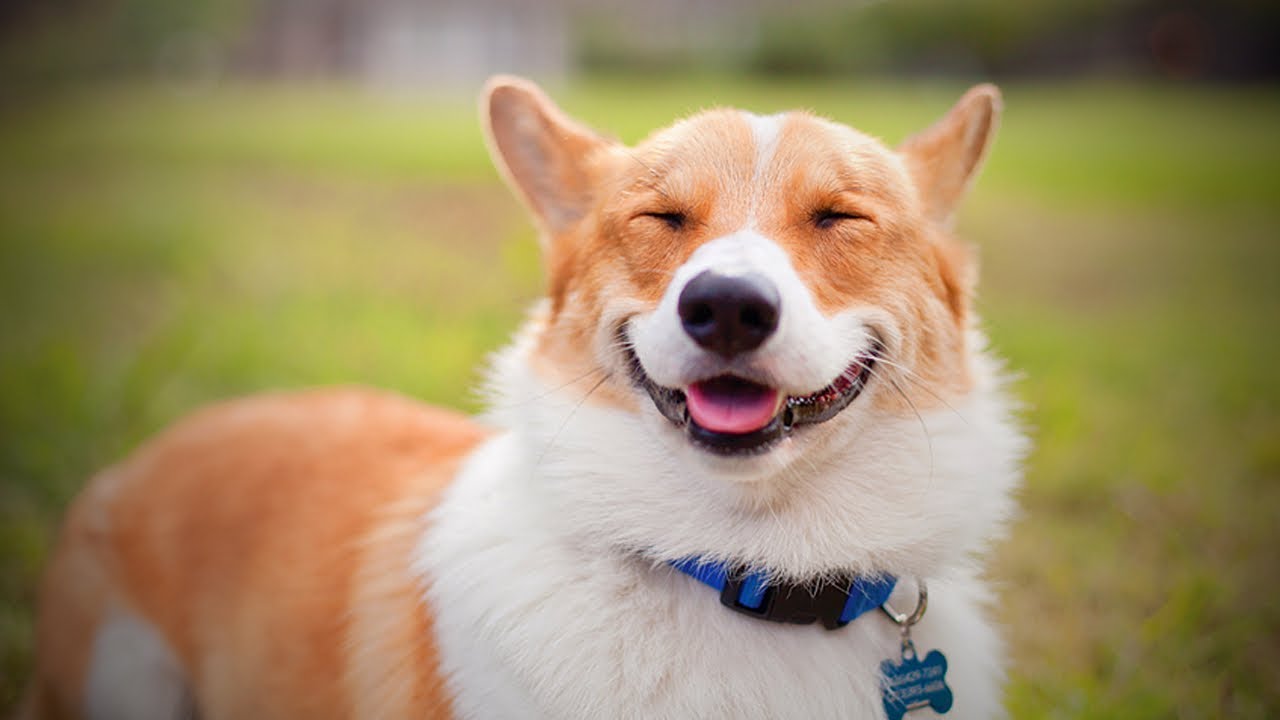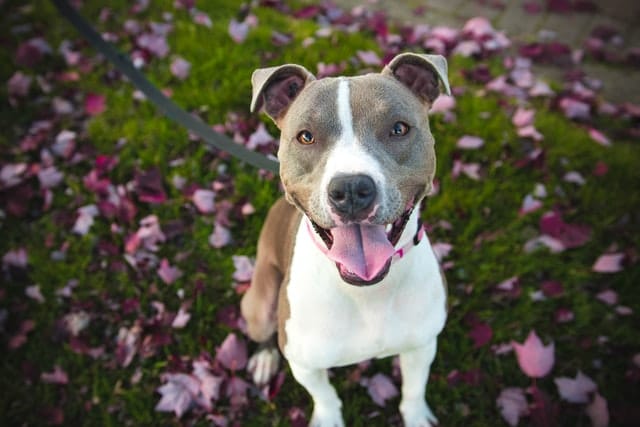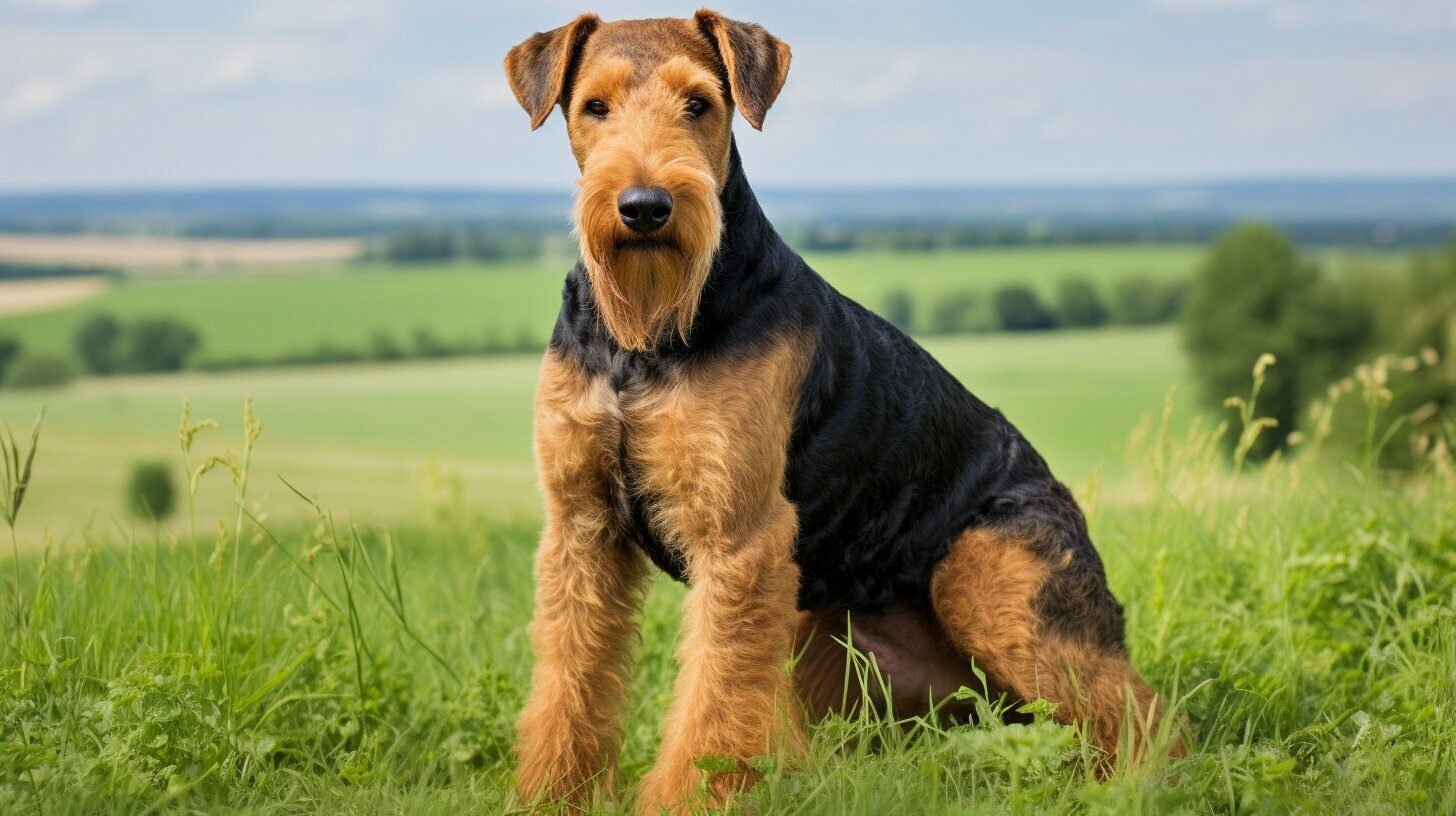Smiling, laughing, and having fun are human activities that most of us take part in regularly. But do dogs smile? If you ask your average dog owner this question, they’ll probably say, “yes, of course, my dog smiles.”
Plenty of videos on the internet show other dogs with huge grins on their faces, and it’s easy to look at these smiles and think that they are just as human-like as ours. However, there’s some debate about whether animals have the same emotional capabilities humans do, including the ability to smile at others or enjoy themselves while they play.
Do dogs smile? The answer might surprise you! While dogs have the anatomy needed to pull off a smile like us, it doesn’t necessarily mean that they do it with the same frequency or in the same way we would. A dog’s body language is quite different than human behavior.
Read on to learn more about this exciting question and see if you agree with the arguments presented by both sides of the debate about the canine smile.
What does it mean to smile?
A smile is a facial expression that is typically associated with happiness. When we see someone smiling, they are happy or enjoying themselves. But what does it mean when a dog smiles?
As you may have guessed, dogs don’t have the same emotional capacity as humans, so a dog’s expression of ‘happiness’ might not look exactly like ours. There’s no question that people and animals express emotion in similar ways.
Can dogs smile?
It’s a common question asked by dog owners and non-dog owners alike: do dogs smile? And the answer might surprise you. While it’s true that dogs can’t physically smile as humans do, that doesn’t mean they don’t express happiness in their way. A dog’s expressions of joy can include panting, wagging its tail, and, yes, even smiling. So next time you see your pup smiling at you, know they’re probably just as happy as can be.
Do dogs have emotions?
It’s no secret that dogs are some of the most emotional creatures on the planet. But what about smiling? Does a dog smile when they’re happy, or is that just a myth? According to animal behaviorists, dog facial expressions can mean many things.
The answer, it turns out, is a little bit of both. As someone who owns two dogs and spends a lot of time with them, I can tell you that they have emotions and can express happiness.
However, in many cases, when we think a dog is smiling, they show its teeth in an expression called the snarl. When a human smiles and shows teeth, it indicates joy. A dog showing teeth can sometimes be cause for concern. An aggressive snarl may mean a dog is ready to attack, rather than the dog is happy.
It can be challenging to tell the difference between these two dog expressions in photos alone because there are subtle differences in their muscles and how their mouths open which might make one look like an expression of happiness while another looks like aggression.
Some dogs showing teeth may be no big deal, while others showing teeth during a “grin” might be a sign of aggression. Another example is that cats are rarely happy when they show teeth. So it can be very different from pet to pet.
So next time you see a photo where someone thinks their dog is smiling, but you don’t know if they should be calling animal control instead because there’s something wrong with that dog? Don’t worry. Most big grins from dogs don’t indicate behavior to be too concerned about.
Are human and canine emotions the same?
It’s a question that has been debated for centuries, but recent research suggests that the answer may be yes. It’s been found that when dogs were shown photographs of their owners, they experienced a surge in oxytocin, the love hormone. This is the same hormone released when humans experience positive emotions like happiness, love, and pride.
Your furry best friends simply show happiness in many additional ways; a tail wagging, your dog’s ears might perk up, facial muscles relax, and sometimes their whole body even shakes. It differs from pet to pet, but dogs quickly learn how to communicate happiness and affection to their owners through body language from a young age.
How do dogs smile?
Dogs smile by baring their teeth in a way that looks similar to a human smile. But why do they do it? There are a few different theories on why dogs might smile. One is that they learn it from humans – after all, we often greet our canine friends with a big smile.
Puppies may see their humans’ lips part and make the same relaxed expression with their mouths. Other pets will show you their joy in other ways than what smiles reveal. Every dog will be different.
Another possibility is your dog does it as a sign of submission, to show that they don’t mean any harm. It could also be just an automatic response to being happy or excited. Whatever the reason, one thing’s for sure: seeing your dog smiling at you makes you feel comfortable as a dog owner. Here are some tips to help you spot a dog’s ‘smile’:
1) Look for signs of relaxation: A loose mouth, relaxed muscles around the eyes, and an overall calm demeanor for your dog.
2) Watch out for panting: While dogs can pant from heat or excitement, it is also a sign of happiness or stress relief; an open mouth doesn’t always indicate the same thing as human laughter.
3) Listen to them bark: Does barking make your dog happy? A dog will typically bark with an upbeat tempo rather than an angry one if they’re excited to see someone or something–which means it’s a pretty good indication that they’re feeling good. Many owners interpret barking as how dogs laugh – this could be the case. And well, when one dog barks, another usually chimes in! So, could this be the canine equivalent of the laughter contagion humans experience? Quite possibly!
4) Check out their tails: Wagging tails indicate excitability, while curled tails can be a sign of contentment. A dog’s tail’s position is critical to tell the difference between tense behavior and happiness.
Are Smiling Dogs Mimicking Us
It’s long been debated whether or not dogs smile or grin. And if a dog smiles, is it because they’re happy, or are they just trying to imitate us? As a pet owner, I’ve always wondered what my dog was thinking.
So I decided to ask around and see what other dog owners had to say about this topic. It turns out that there have been several studies done on the dog in recent years, and the findings seem to be all over the place, depending on who you ask.
For example, one study found that your four-legged friend isn’t to create a human-like smile due to their physiology- which suggests that dog smiles are more of an imitation than an expression of happiness. On the other hand, another study found that some canines did appear happy when exposed to treats and toys- which would make sense if we accept the idea that smiling is a way for them to communicate joy with their owners!
You’re more likely to see a dog wagging to show you the equivalent of a submissive grin than a natural dog smile. Showing submission with a relaxed face and loose, simple body language is how a pet indeed smiles at a person. No teeth needed!
You may notice the upward movement of their lips, but like other animals, dogs have a lot of different body language to show humans how they feel. Has your dog ever lifted a paw toward you like they want to give you a handshake? The average person recognizes this appeasement gesture as another expression of joy by pets nearly as much as a wagging tail.
Any time your dog tries to communicate with you, whether through facial expression or another part of their body, it can be considered the equivalent of a human smile. Your pet tells you in so many ways daily that they love you; you just have to watch for them!
Final Thought
Dogs may not smile in the traditional sense, but that doesn’t mean they don’t show their happiness in other ways. Their tail wags, their ears perk up, and they may even lean into you when feeling content. So next time you see your dog looking happy, rest assured that they are probably smiling on the inside.
Frequently Asked Questions
Are dogs actually happy when they smile?
Some people may misinterpret even aggressive teeth-baring as a pleasant greeting. Dogs typically grin because they are happy, so it's simple to compare that emotion to human smiles.
Do dogs ever smile?
Dog owners mistake this "dog smile" for one since it typically appears when the animal is at ease and seems content. The phenomenon known as laughter contagion describes how these "dog smiles" frequently follow a human smile. The reason we smile at dogs may cause them to grin in return.
Do dogs smile or laugh?
Dogs can laugh as well, and they usually do so when they are having fun. Canine laughter starts off with the canine equivalent of a smile but also makes a sound very similar to panting.
How do you know when dogs smile?
According to Lotz, when a dog is pleased and smiling, she would "have ears forward or in the relaxed state for the breed, relaxed eyes, and a big wide open mouth, with tongue hanging down, sometimes panting too."






















